Te Ruma Kare | An immersive koha experience
A digital giving experience rooted in manaakitanga, enabling communities to donate to Auckland War Memorial Museum through a culturally grounded, interactive installation.
Brief
Design an immersive digital donation experience for Auckland War Memorial Museum by utilising interactive design and while integrating their newly aquired 'MIKA Tap and Pay' machines into the user journey.
My Role
Me | Team Leader | UX | UI | 3D
Corey Mcbride | Motion
Matt Brown | Graphic
Yugeong Ha | UX | UI | Graphic
Juwon Park | UX | UI | Graphic
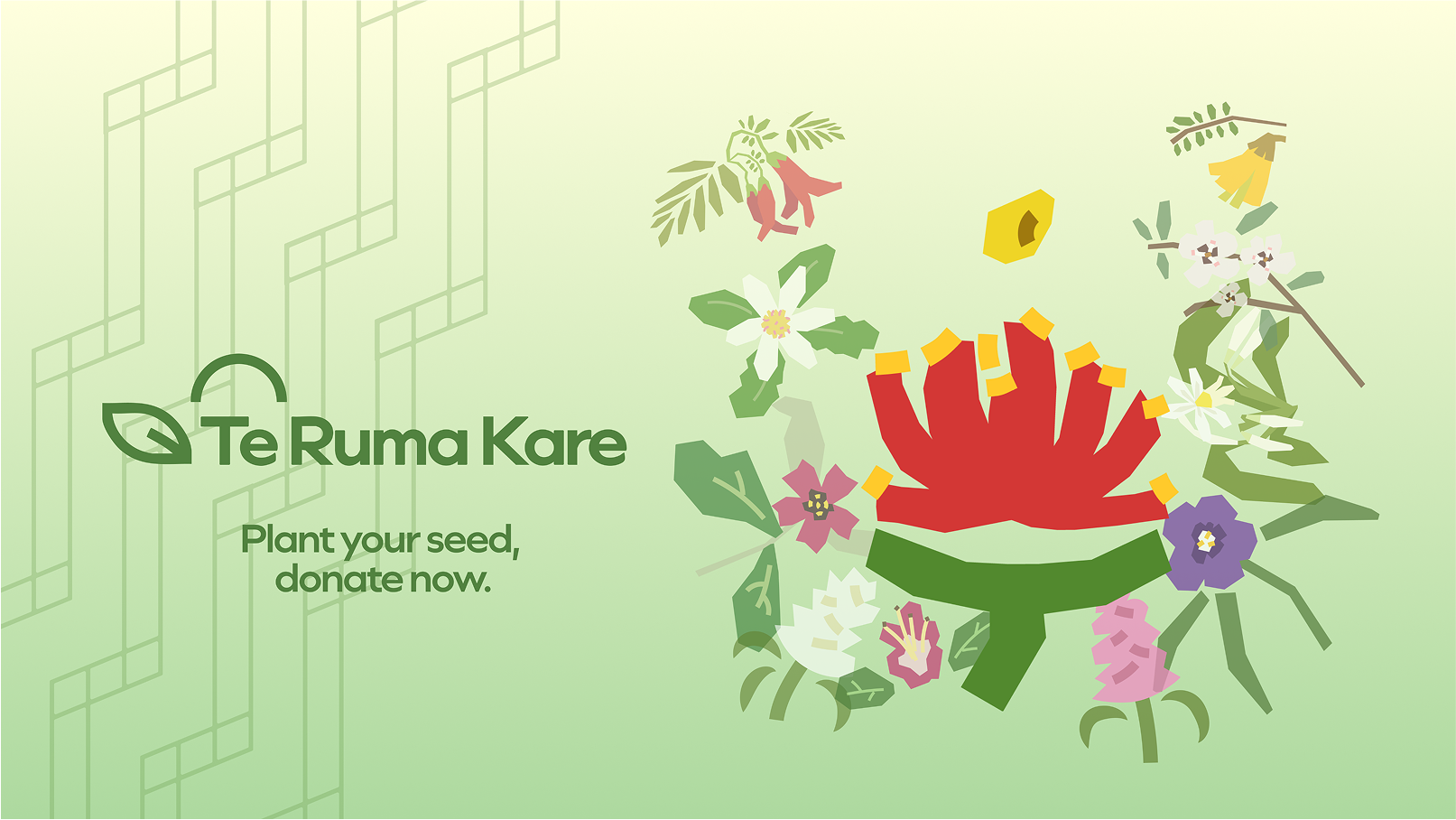
For this brief, we were tasked with designing an interactive donation experience for Auckland Museum that engaged visitors meaningfully while reflecting the cultural values of Aotearoa. Early on, we made the intentional decision to centre our concept around koha—the act of giving—as it felt like the most natural and culturally resonant response to the challenge.
Our team developed Te Ruma Karē, an immersive, garden-themed digital space inspired by Te Ao Māori principles such as manaakitanga, tikanga, and whakapapa. Visitors step into a quiet, sacred-feeling room where they digitally plant a native flower as a symbolic donation, becoming part of a growing collective display.
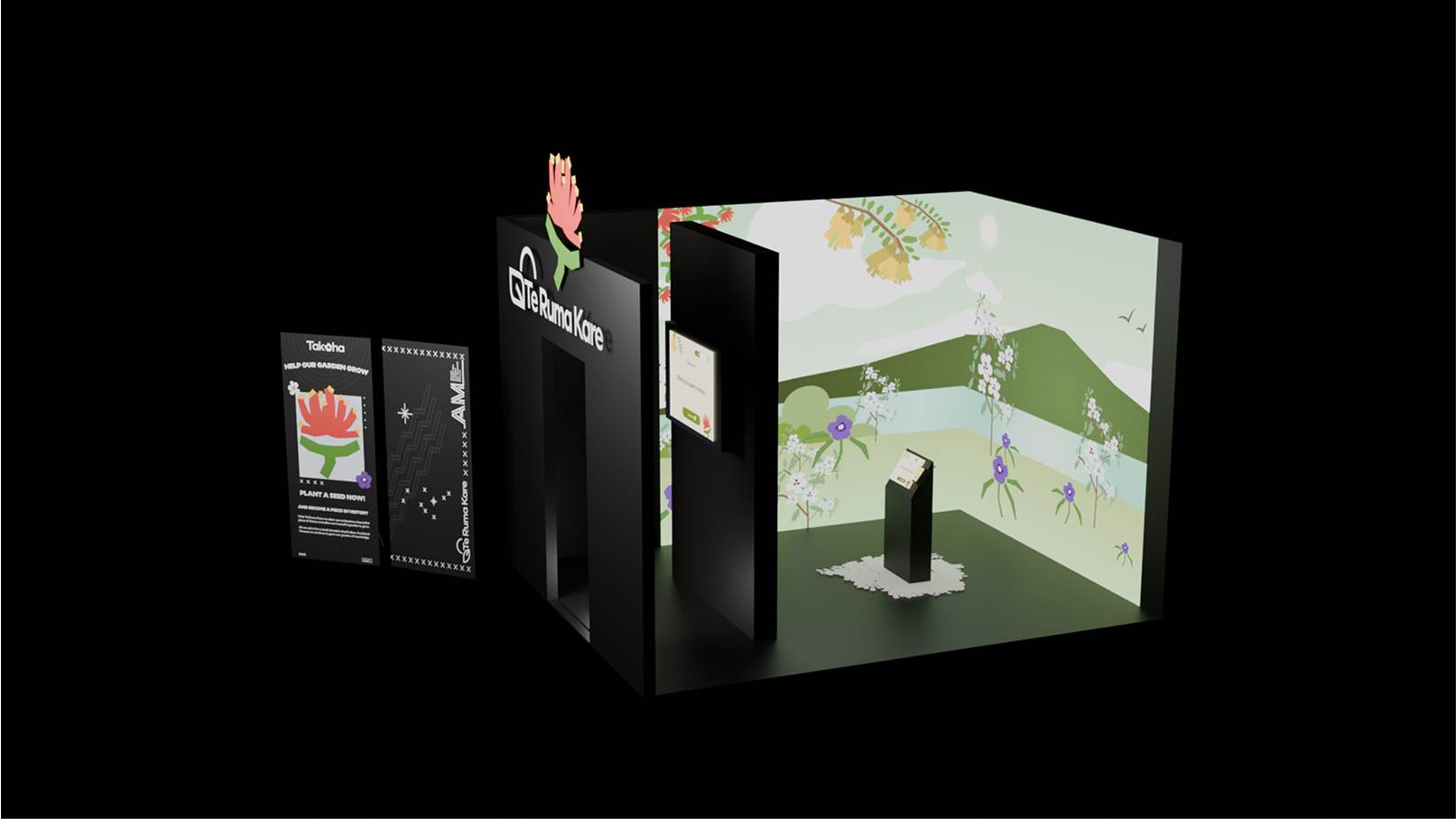
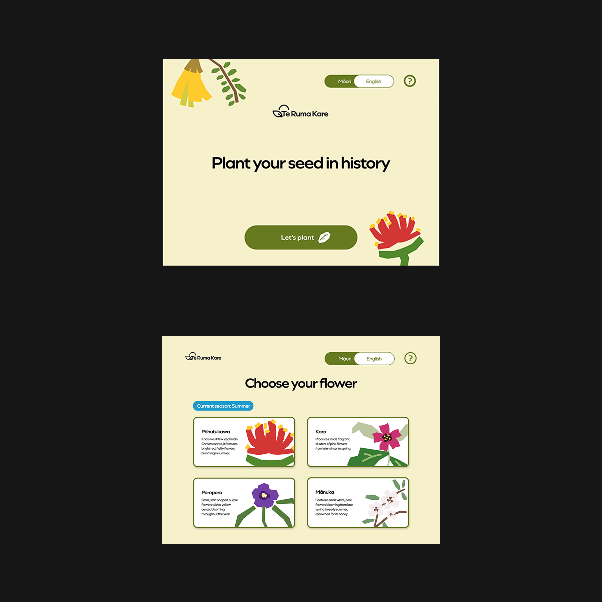
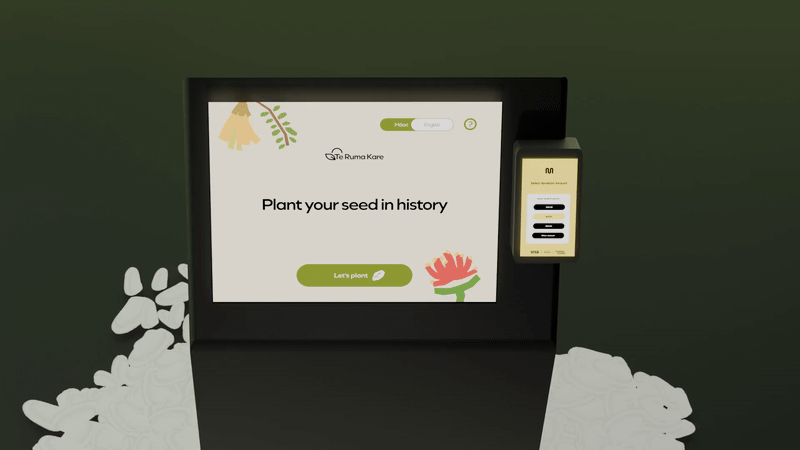
As UX designer and team leader, I shaped the experience from concept to execution—even learning Blender to model the 3D space and ensure the design aligned with tikanga and practical needs. Every detail—from the low-poly visual style to poutama and purapura whetū motifs—was chosen to reflect a respectful and contemporary expression of Māori culture.
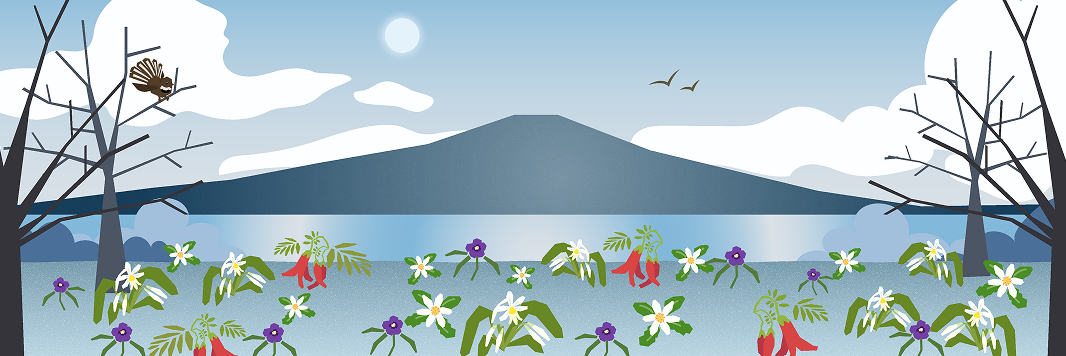

Once a donation was made, visitors would see their selected flower grow on the digital garden wall. Animated transitions and subtle sound design drew attention to the user’s new flower as it bloomed.
The room’s background shifted between day, night, and the four seasons to create a living, temporal space that evolved throughout the year.
We introduced a dual palette system to reflect both physical and metaphysical aspects of Te Ao Māori:
- Soft greens and whites — inspired by native bush, for calm and emotional connection.
- Black-based accents — representing tapu and mana, creating depth and sacredness.

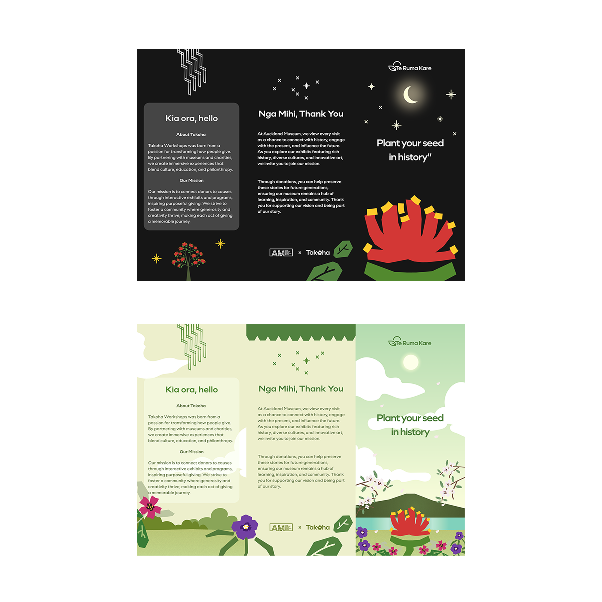
We grounded this project in core values of Te Ao Māori: manaakitanga (hospitality), tikanga (customs), and whakapapa (connection). Koha was reframed as a collective, symbolic act rather than a transactional exchange.
The native garden metaphor shaped both the interaction model and emotional tone — inviting quiet reflection, contribution, and connection.
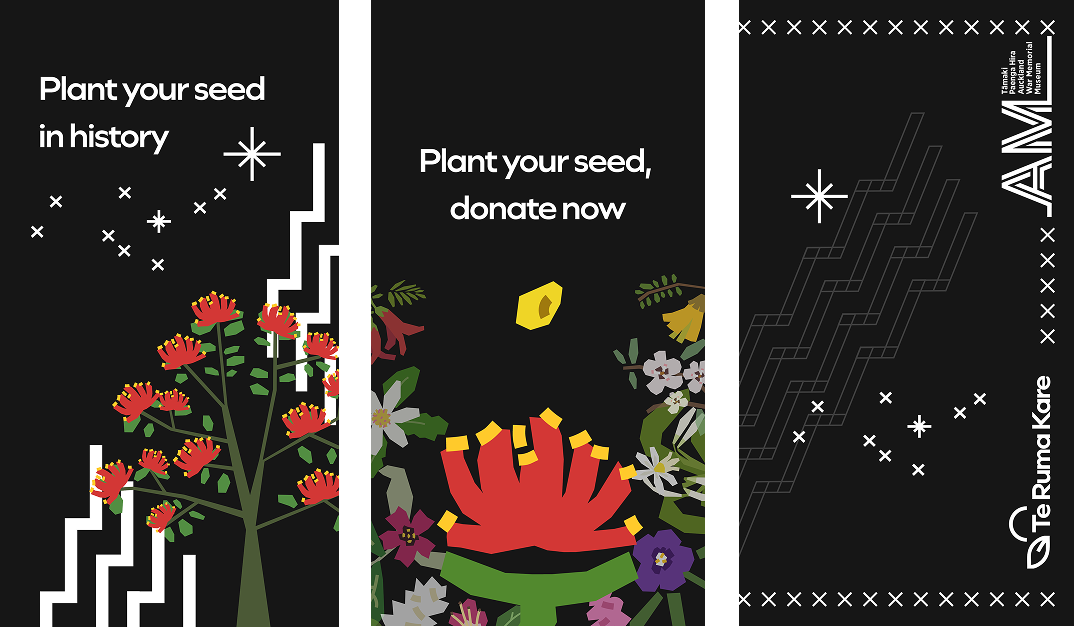
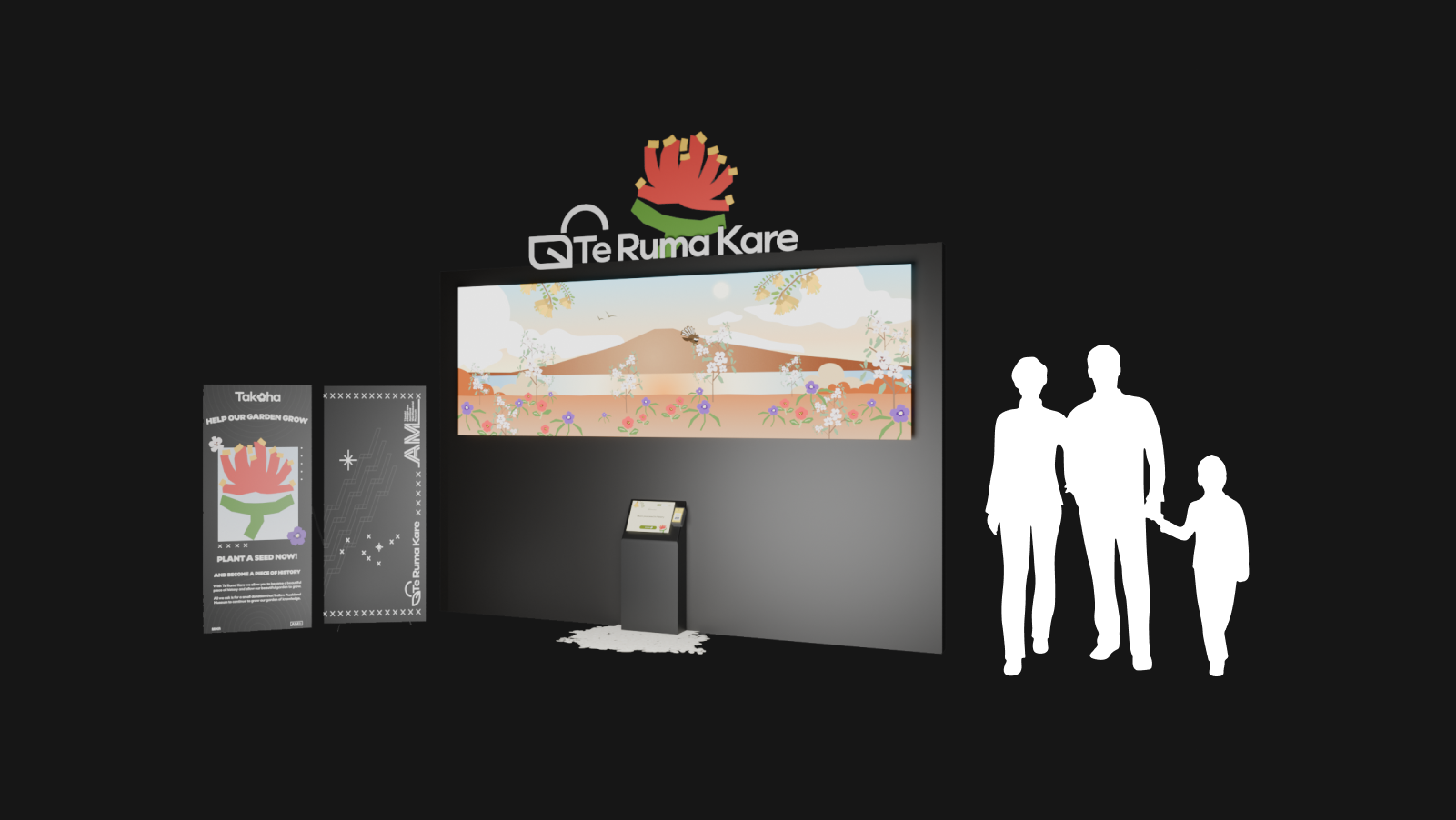
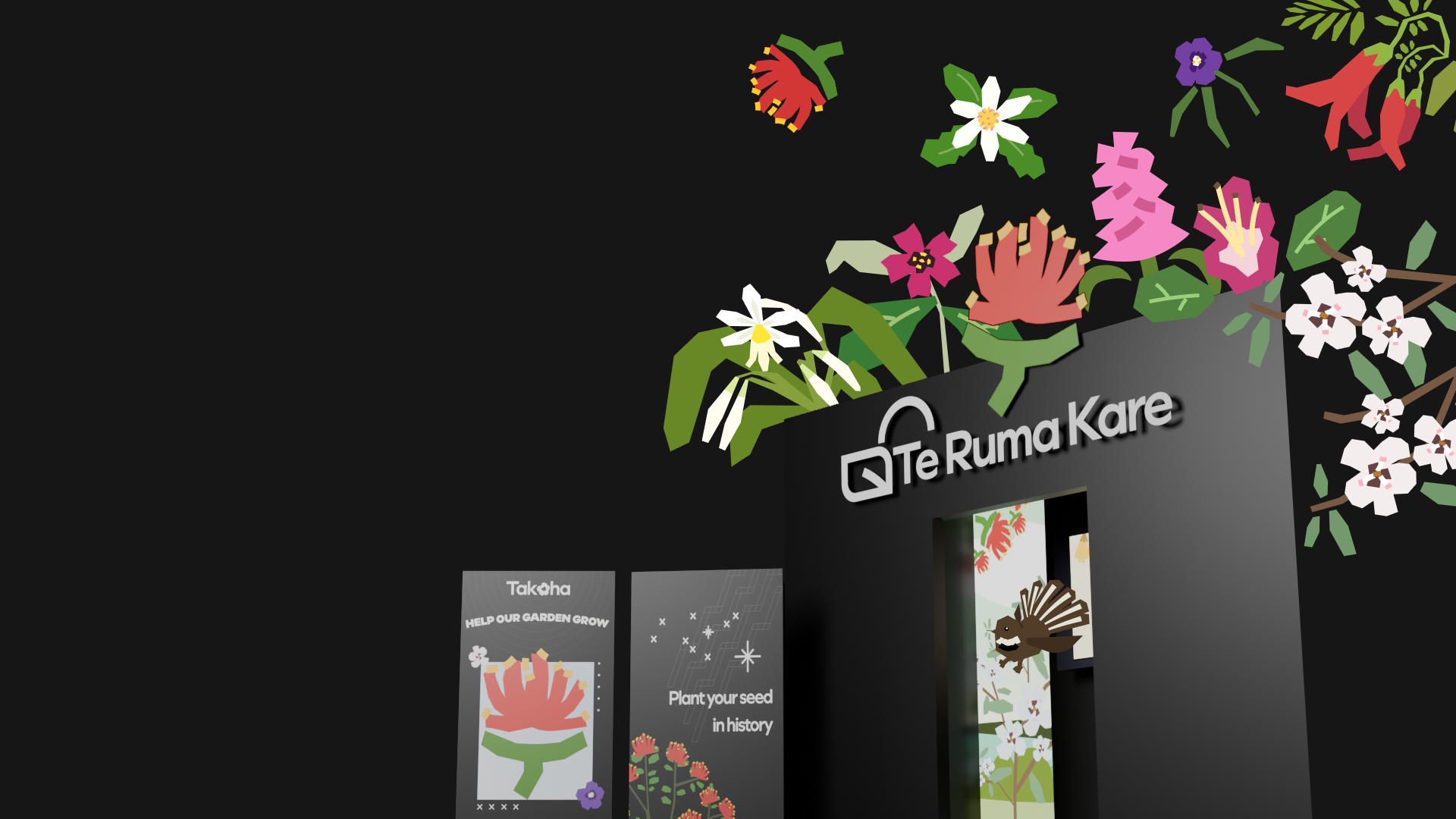
Inputs
Design intent: We sought an identity and experience that embodied the calm, cultural energy of the Auckland Museum’s ground floor and historical context,
while grounding it in Te Ao Māori. It also needed to be emotionally accessible to a global audience.
Inspiration: Our visual language was informed by natural forms, māori symbolism such as poutama and purapura whetū, and the concept of koha
as relational reciprocity rather than transactional giving.
Constraints: Asking for money in a low-pressure, manaaki-first way was crucial — especially for younger visitors under economic strain.
Outputs
Problem solved: We used a garden metaphor as a culturally safe, universally relatable theme for the experience.
It allowed us to express values like growth, contribution, and collective effort in a gentle, symbolic and universally recognised way.
UI Strategy: We emphasised privacy-first donation to reduce pressure and remove embarrassment around financial limits.
The interaction focused on emotional reward and visual participation (flower planting) over monetary recognition.
Visual language: Poutama represented growth and learning; purapura whetū conveyed interconnectedness and potential. These guided the branding and spatial logic.
This approach balanced cultural integrity with modern design sensibility, creating a space that was both inclusive and grounded.
Design tools





